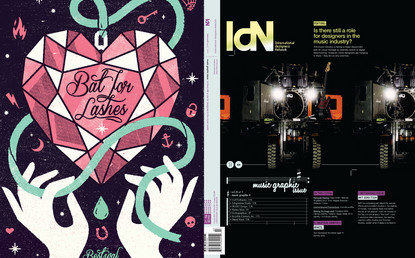Music Graphic

15.07.2013 Features
In this article, originally published in the volume v20n3 of IdN Magazine, we find out how designers are hanging in there as the music industry faces a disconnect with its visual heritage.
Is there still a role for designers in the music world?
The music industry is facing a major disconnect with its visual heritage as listeners switch to digital downloading. But some designers are hanging in there — they tell us why and how.
When the music has to stop — or does it?
Recorded music has always been packaged, from the very earliest days when wax cylinders came in cardboard tubes, and has therefore always involved designers. In the palmy days of vinyl LPs with sometimes stunning cover art and often erudite liner notes, the presentation was almost as important as the product.
But with the industry morphing so rapidly into the field of digital-download delivery, where do the graphics come in now? This is a burning question for all those working in the area of visually representing music. To see what their answers are, read this feature story, which solicits the views of seven specialist music designers.
Leif Podhajsky (London, UK)
I think that good music design should reflect both the sounds and concepts that the musicians are exploring, extracting an essence and filtering it into a composition that, hopefully, translates to the viewer both visually and emotionally something about the sounds inside. Like all good design, it should communicate, inspire and provoke thought.
Daniel Reed (Sheffield, UK)
Good music design should combine an understanding of music theory and practice with a passion for sound. If you are truly able to connect with the music you are working with, you are better able to interpret the visuals and concepts on a deeper level.
Telegramme Studio (London, UK)
Seeing people walk away from the merchandise table carrying a freshly printed poster for the gig they have attended means you have somehow made a connection from music to print that the people closest to the music can identify with – that must mean that there is something successful in what’s been made.
Featuring:
Telegramme Studio | Invisible Creature, Inc. | IWant Design | Daniel Reed | Matteo Meta | Leif Podhajsky | Giottographica
Reprinted with permission from IdN Magazine.
All rights reserved. This first appeared in IdN v20n3
IdN MagazineOriginal article

relatedarticles

goodbye! and next steps for colleague and friend alexey lazarev

explorations in ethical design: meditations on equality

RCA launches new programme: MA Digital Direction

Interview | Ermolaev Bureau (Moscow)
